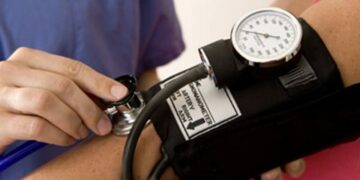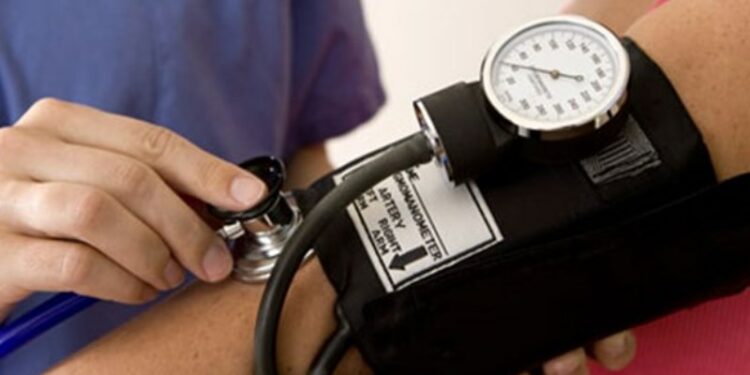Ποιοι επιστημονικοί φορείς διεξήγαγαν τη νέα έρευνα για την πίεση αίματος
Με επικεφαλής το Πανεπιστήμιο του Έξετερ, η παγκόσμια επιστημονική συνεργασία με την ονομασία INTERPRESS-IPD πραγματοποίησε μια μετα-ανάλυση όλων των διαθέσιμων σχετικών ερευνών και στη συνέχεια συγχώνευσε δεδομένα από 24 παγκόσμιες μελέτες για να δημιουργήσει μια βάση δεδομένων με περίπου 54.000 άτομα. Τα δεδομένα αφορούσαν ενήλικες από την Ευρώπη, τις ΗΠΑ, την Αφρική και την Ασία για τους οποίους ήταν διαθέσιμες οι μετρήσεις της αρτηριακής τους πίεσης και στα δύο χέρια.
Χρηματοδοτούμενη από το βρετανικό Εθνικό Ινστιτούτο Έρευνας για την Υγεία (NIHR) και δημοσιευμένη χθες στο επιστημονικό περιοδικό Hypertension, η μελέτη αυτή είναι η πρώτη που καταλήγει στο συμπέρασμα ότι όσο μεγαλύτερη είναι η διαφορά στην πίεση αίματος από το ένα χέρι στο άλλο, τόσο μεγαλύτερος είναι ο επιπλέον κίνδυνος για την υγεία του ασθενούς.
Επί του παρόντος, οι διεθνείς κατευθυντήριες γραμμές για την αρτηριακή πίεση αίματος συμβουλεύουν τους επαγγελματίες της υγείας να μετρούν την αρτηριακή πίεση και στα δύο χέρια κατά την εξέταση για εκτίμηση του καρδιαγγειακού κινδύνου, αλλά αυτό αγνοείται ευρέως. Η νέα μελέτη παρέχει ένα νέο ανώτατο όριο “φυσιολογικού” για τη διαφορά στην πίεση αίματος μεταξύ των δύο χεριών, το οποίο είναι σημαντικά χαμηλότερο από την τρέχουσα οδηγία. Η έρευνα θα μπορούσε να οδηγήσει σε αλλαγή των διεθνών κατευθυντήριων γραμμών για την υπέρταση, που σημαίνει ότι περισσότεροι ασθενείς σε κίνδυνο θα μπορούσαν να εντοπιστούν και να λάβουν δυνητικά σωτήρια για τη ζωή τους θεραπεία.
Δεν τηρείται στην πράξη η οδηγία για να λαμβάνεται η πίεση αίματος και στα δύο χέρια
Οι ερευνητές ανέλυσαν δεδομένα σχετικά με τη διαφορά της αρτηριακής πίεσης μεταξύ των δύο χεριών ενός ατόμου και κατέγραψαν τον αριθμό των θανάτων, καρδιακών προσβολών και εγκεφαλικών επεισοδίων σε ένα εύρος άνω των 10 ετών.
Ο επικεφαλής συγγραφέας και ο γιατρός δρ. Chris Clark, της Ιατρικής Σχολής του πανεπιστημίου του Έξετερ, δήλωσε: “Το να παίρνουμε την πίεση αίματος και στα δύο χέρια είναι μια συνηθισμένη πρακτική παρακολούθησης της αρτηριακής πίεσης, είναι ανέξοδη και μπορεί να πραγματοποιηθεί σε οποιοδήποτε περιβάλλον υγειονομικής περίθαλψης, χωρίς την ανάγκη για επιπλέον ή ακριβό εξοπλισμό. Αν και οι διεθνείς οδηγίες προτείνουν να λαμβάνεται πάντοτε η πίεση αίματος και στα δύο χέρια, στην πράξη αυτό συμβαίνει μόνο τις μισές φορές στην καλύτερη περίπτωση, συνήθως λόγω χρονικών περιορισμών. Η έρευνά μας δείχνει ότι ο μικρός επιπλέον χρόνος που απαιτείται για την μέτρηση της πίεσης και στα δύο χέρια θα μπορούσε τελικά να σώσει ζωές» .
Και συνέχισε: “Γνωρίζουμε εδώ και πολύ καιρό ότι η διαφορά στην αρτηριακή πίεση αίματος από το ένα χέρι στο άλλο συνδέεται με φτωχότερα αποτελέσματα υγείας. Η μεγάλης έκτασης έρευνας INTERPRESS-IPD μας βοηθάει να το κατανοήσουμε με περισσότερες λεπτομέρειες. Μας λέει ότι όσο μεγαλύτερη είναι η διαφορά στην αρτηριακή πίεση μεταξύ των δύο χεριών, τόσο μεγαλύτερος είναι ο καρδιαγγειακός κίνδυνος, οπότε είναι πολύ σημαντικό να παίρνουμε την πίεση και στα δύο χέρια για να διαπιστώσουμε ποιοι ασθενείς ενδέχεται να διατρέχουν σημαντικά αυξημένο κίνδυνο».
Πίεση αίματος: Τι είναι, πώς μετριέται και γιατί παίζει ρόλο η διαφορά από το ένα χέρι στο άλλο
Η αρτηριακή πίεση αίματος αυξάνεται και μειώνεται σε αντιστοιχία με κάθε παλμό. Μετράται σε μονάδες χιλιοστών υδραργύρου (mmHg) και η ένδειξη δίνεται πάντα σε δύο αριθμούς: η ανώτερη (συστολική πίεση, γνωστή και ως “μεγάλη”) ένδειξη αντιπροσωπεύει τη μέγιστη αρτηριακή πίεση και η χαμηλότερη (διαστολική πίεση, γνωστή και ως “μικρή”) τιμή είναι η ελάχιστη αρτηριακή πίεση. Η υψηλή συστολική αρτηριακή πίεση δείχνει υπέρταση.
Η υπέρταση επηρεάζει το ένα τρίτο του ενήλικου πληθυσμού και είναι η πιο μεγάλη αιτία παγκοσμίως για καρδιακή προσβολή, εγκεφαλικό επεισόδιο και θάνατο εξ αυτών που μπορούν να προληφθούν.
Μια σημαντική διαφορά μεταξύ των μετρήσεων της συστολικής αρτηριακής πίεσης από το ένα χέρι στο άλλο μπορεί να είναι ενδεικτική μιας στένωσης ή σκλήρυνσης των αρτηριών, η οποία μπορεί να επηρεάσει τη ροή του αίματος. Αυτές οι αρτηριακές αλλαγές αναγνωρίζονται ως ένας περαιτέρω δείκτης κινδύνου για επακόλουθη καρδιακή προσβολή, εγκεφαλικό επεισόδιο ή πρόωρο θάνατο και πρέπει να διερευνηθούν για θεραπεία.
Οι ερευνητές κατέληξαν στο συμπέρασμα ότι κάθε διαφορά mmHg που βρέθηκε μεταξύ των δύο βραχιόνων, αύξησε τον προβλεπόμενο 10ετή κίνδυνο για ένα από τα ακόλουθα κατά 1%:
- νέα στηθάγχη
- καρδιακή προσβολή και
- εγκεφαλικό επεισόδιο
Πίεση αίματος: Οι ισχύουσες και οι νέες οδηγίες για την μέγιστη διαφορά από το ένα χέρι στο άλλο
Προς το παρόν, τόσο οι βρετανικές όσο και οι ευρωπαϊκές κατευθυντήριες γραμμές αναγνωρίζουν μια συστολική διαφορά 15 mmHg ή περισσότερο μεταξύ των δύο χεριών ως την βάση για πρόσθετο καρδιαγγειακό κίνδυνο. Αυτή η νέα μελέτη διαπίστωσε ότι η μείωση του ορίου στα 10 mmHg εξακολουθούσε να είναι ένδειξη πρόσθετου κινδύνου. Αυτό σημαίνει ότι πολλοί περισσότεροι άνθρωποι θα πρέπει να ακολουθούν ειδική θεραπεία εάν υπάρχει τέτοια διαφορά στην πίεση αίματος ανάμεσα στα δύο χέρια τους.
Ο συν-συγγραφέας της έρευνας, καθηγητής Victor Aboyans, επικεφαλής του τμήματος καρδιολογίας στο Πανεπιστημιακό Νοσοκομείο Dupuytren στο Limoges της Γαλλίας, δήλωσε: “Πιστεύουμε ότι μια διαφορά 10 mmHg μπορεί τώρα λογικά να θεωρηθεί ως το ανώτατο όριο φυσιολογικού για τη συστολική πίεση ανάμεσα στα δύο χέρια. Αυτές οι πληροφορίες θα πρέπει να ενσωματωθούν σε μελλοντικές οδηγίες και κλινική πρακτική στην αξιολόγηση καρδιαγγειακού κινδύνου. Αυτό θα σήμαινε ότι πολλοί περισσότεροι άνθρωποι θα μπορούσαν να μειώσουν τον κίνδυνο καρδιακής προσβολής, εγκεφαλικού επεισοδίου και θανάτου».
Μια διαφορά στην πίεση αίματος από το ένα χέρι στο άλλο μεγαλύτερη από 10 mmHg εμφανίζεται στο 11% των ατόμων με υψηλή αρτηριακή πίεση (υπέρταση) και στο 4% του γενικού πληθυσμού.































